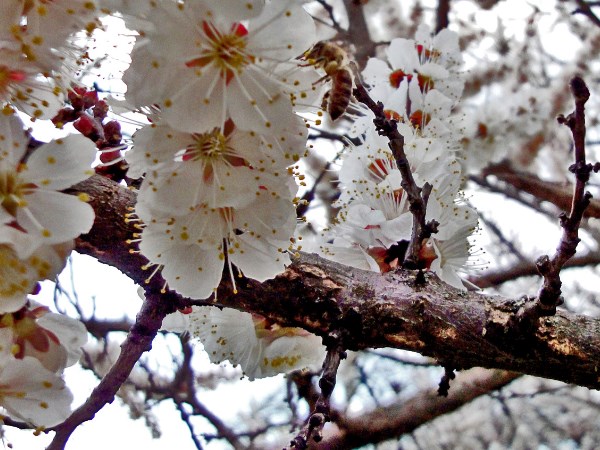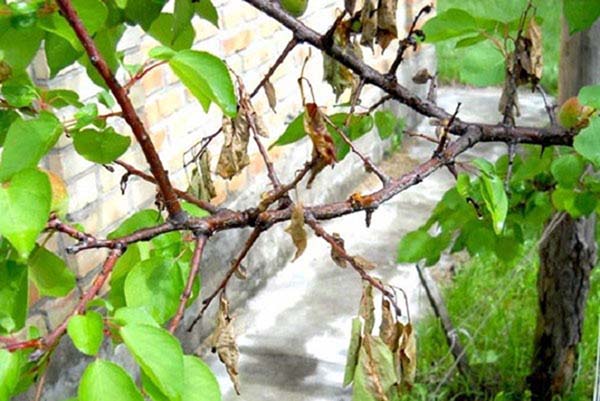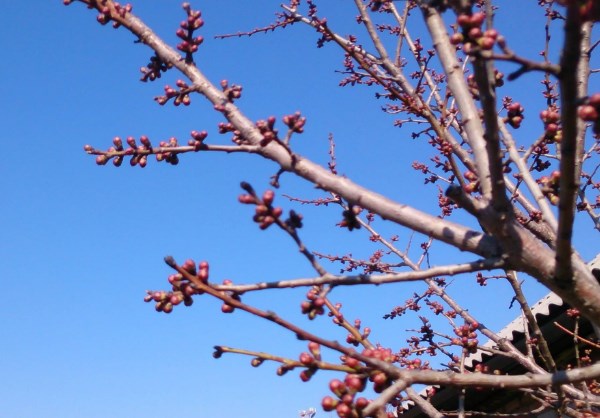Apricot does not bloom or bear fruit: reasons and what to do
You are probably facing one of the following situations:
- Your apricot blossomed, but did not bear fruit (the flowers simply flew around or the ovaries formed and fell off).
- The apricot did not bloom at all.
Unfortunately, these situations are familiar to many gardeners.
Next, let's try to figure out why the apricot does not bear fruit, why this happens, and what can be done.

Content
Apricot does not bear fruit: reasons and what to do
Most often, apricot flowers and ovaries crumble due to spring frosts. The fact is that the apricot wakes up too early, when the weather is still unstable.
Really spring frosts during flowering - this is the main reason for the low yield of apricot!
However, due toper too low temperatures (below -24 ..- 26 degrees) flower buds can simply freeze (freeze) in winter... As a result, in the spring the fruit (flower) buds dry up and fall off, and only leaf (vegetative) buds bloom.

What to do in this situation?
- Continue caring for the apricot and hope that this winter there will be no such frosts.
- Purchase and plant more frost-resistant variety.
Next, we will talk about those problematic situations that you can influence and correct planting and care errors (as opposed to frost).
Although! You can try to postpone (postpone) flowering by pruning this year's growth in late July-early August (as a result, the tree will set buds later, and they will most likely bloom later).
The tree blooms, an ovary forms, but soon falls off
If, after flowering apricot, literally within 4-10 days, its shoots began to dry out (as if "burned") together with the ovaries, then, most likely, they were struck monilial burn (moniliosis).

From moniliosis stone fruit trees need to be processed before and after flowering special fungicidal preparations. Before flowering - Bordeaux liquid (copper sulfate), Abiga Peak or Hom (both based on copper oxychloride), after - Horus.
Often, the reason for the discharge of the ovary lies in a lack of nutrition. In other words, the apricot experiences lack of moisture and / or certain macro- and microelements.
Accordingly, during this period you must provide the apricot with the necessary moisture, that is, water and feed it regularly. However, this must be done in the correct time frame, namely:
- before flowering (nitrogen fertilizers, for example, mineral - urea (carbamide), ammonium nitrate, organic - mullein, bird droppings);
However, during this period, the land is usually still wet after the snow has melted, so additional watering is usually not necessary.
- at the beginning of flowering (in the pink bud stage, i.e. 7-10 days before the blooming of flower buds) - foliar spraying (without watering at the root);
If the weather is unfavorable (it is cool enough, so to speak, there is non-flying weather for pollinators - bees), then improve fruit setting, you can spend foliar feeding (per sheet) apricot boron (boric acid solution).
- after flowering (after 10-14 days) - nitrogen fertilization can be repeated again (for example, foliar fertilization with urea);
- after the formation of ovaries - complex potassium-phosphorus fertilizers with microelements, it is still possible with nitrogen.
- after fruiting and harvesting (i.e. autumn) - phosphorus-potassium root top dressing (superphosphate + potassium sulfate or just potassium monophosphate).
Advice! Watering can be combined with dressing, in other words, to prepare liquid solutions. In this case, it is advisable to irrigate with plain water before fertilizing.
There are flowers, but the ovary is not formed
If the flowers simply crumble, then, most likely, pollination simply did not occur.
Apricot is generally considered to be an individual crop (self-fertile). However, some apricots are self-fertile, i.e. without the presence of another pollinator variety on the site (within a radius of 30-50 meters), the ovary simply will not form. Accordingly, you need have at least 2, and preferably 3 different varieties nearby (one flowering period). Or you can graft on apricot other varieties so that there are several different varieties on the same tree.
Doesn't bloom at all
If the apricot does not even begin to bloom, then the matter may be as follows (if we exclude freezing of the buds in winter):
- Tree still too young, in other words, has not entered the fruiting age (as a rule, apricots begin to bloom and bear fruit in the 3-5th year after planting).
- You cropping wrong, namely, remove the fruit branches of the apricot.
Fruit formations of apricot (like all stone fruits) are spurs or thorns, bouquet twigs.

Advice! About nuances spring pruning apricot read in this detailed article.
- Initially planted incorrectlye.g. in too shady place (although apricot is a very sun- and heat-loving southern plant) and / or not taking care of (apply an excessive amount of nitrogen fertilizers, which makes the tree "fattening").
Note! The site has a separate material about how to plant an apricot in spring, look after spring and in the fall.

